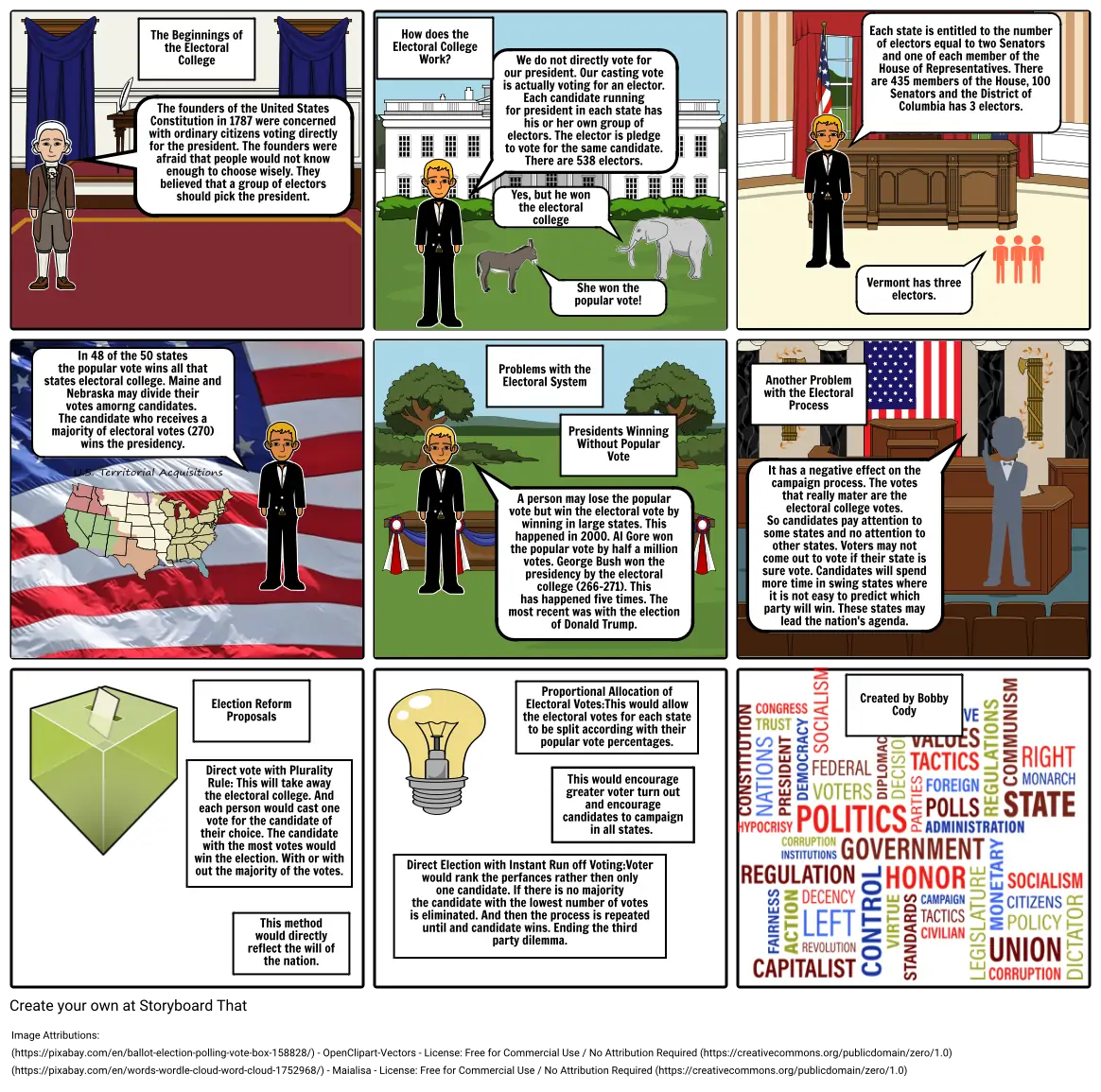The Electoral College

Texto del Guión Gráfico
- The founders of the United States Constitution in 1787 were concerned with ordinary citizens voting directly for the president. The founders were afraid that people would not know enough to choose wisely. They believed that a group of electors should pick the president.
- The Beginnings of the Electoral College
- How does the Electoral College Work?
- We do not directly vote for our president. Our casting vote is actually voting for an elector. Each candidate running for president in each state has his or her own group of electors. The elector is pledge to vote for the same candidate. There are 538 electors.
- Yes, but he won the electoral college
- She won the popular vote!
- Each state is entitled to the number of electors equal to two Senators and one of each member of the House of Representatives. There are 435 members of the House, 100 Senators and the District of Columbia has 3 electors.
- Vermont has three electors.
- In 48 of the 50 states the popular vote wins all that states electoral college. Maine and Nebraska may divide their votes amorng candidates. The candidate who receives a majority of electoral votes (270) wins the presidency.
- A person may lose the popular vote but win the electoral vote by winning in large states. This happened in 2000. Al Gore won the popular vote by half a million votes. George Bush won the presidency by the electoral college (266-271). This has happened five times. The most recent was with the election of Donald Trump.
- Problems with the Electoral System
- Presidents Winning Without Popular Vote
- It has a negative effect on the campaign process. The votes that really mater are the electoral college votes. So candidates pay attention to some states and no attention to other states. Voters may not come out to vote if their state is sure vote. Candidates will spend more time in swing states where it is not easy to predict which party will win. These states may lead the nation's agenda.
- Another Problem with the Electoral Process
- Direct vote with Plurality Rule: This will take away the electoral college. And each person would cast one vote for the candidate of their choice. The candidate with the most votes would win the election. With or with out the majority of the votes.
- Election Reform Proposals
- This method would directly reflect the will of the nation.
- Direct Election with Instant Run off Voting:Voter would rank the perfances rather then only one candidate. If there is no majority the candidate with the lowest number of votes is eliminated. And then the process is repeated until and candidate wins. Ending the third party dilemma.
- Proportional Allocation of Electoral Votes:This would allow the electoral votes for each state to be split according with their popular vote percentages.
- This would encourage greater voter turn out and encourage candidates to campaign in all states.
- Created by Bobby Cody
Atribuciones de la Imagen
- https://pixabay.com/en/ballot-election-polling-vote-box-158828/ - OpenClipart-Vectors - (Licencia Free for Commercial Use / No Attribution Required (https://creativecommons.org/publicdomain/zero/1.0) )
- https://pixabay.com/en/words-wordle-cloud-word-cloud-1752968/ - Maialisa - (Licencia Free for Commercial Use / No Attribution Required (https://creativecommons.org/publicdomain/zero/1.0) )
Más de 30 millones de guiones gráficos creados
¡Sin Descargas, sin Tarjeta de Crédito y sin Necesidad de Iniciar Sesión Para Probar!

